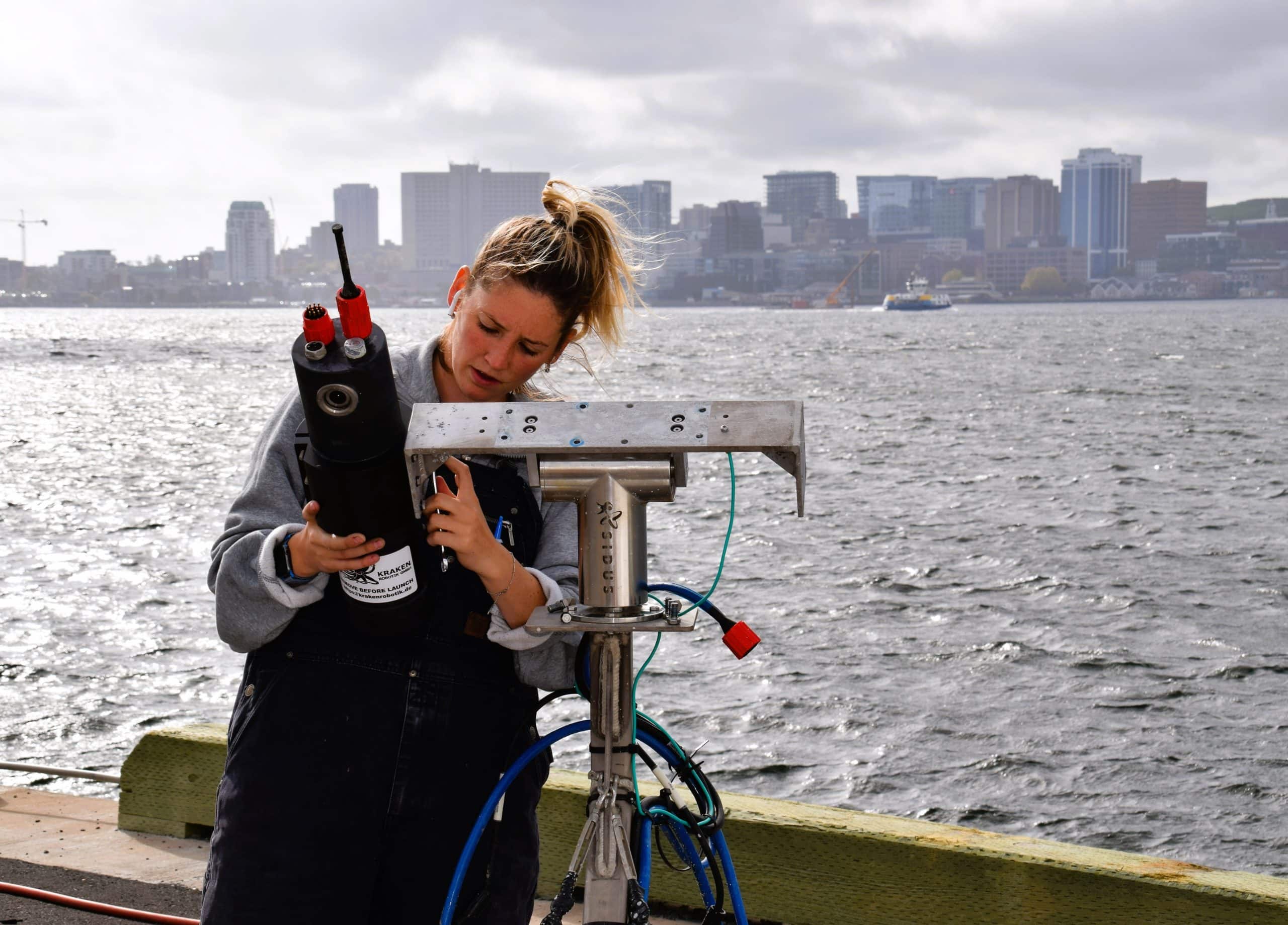Located on the seabed 10 metres below the surface and 100 metres from COVE’s wharf, lies a small triangular frame with the capability of global reach: the Stella Maris.
Stella Maris is a multi-sensor seabed platform, a low-cost and easily accessible way for ocean technology companies to conduct product development, verification, and commercialization to get their products to market faster.
“In terms of what a multi-sensor seabed platform is, it rests along the ocean floor and has the ability to hold a wide variety of instruments that collect different oceanographic parameters,” said Kennedy Sittler, Marine Technician at COVE. “My day-to-day is focused on monitoring Stella Maris, and any other tasks that need to be done in terms of Stella. This includes a lot of tour visits, communication with clients, things like that.”
While there are other subsea platforms around the world, they are almost all built for research purposes. What makes Stella Maris unique is that it is designed for product development and promoting ocean technology.
Users can remotely monitor, control and configure equipment on the platform from the operations centre located on the edge of COVE’s wharf.
The Stella Maris currently holds two types of sensors: base sensors and company sensors.
“Base sensors are sensors that COVE owns are used to collect baseline data that companies and clients have access to, to compare or correlate with their data. We also have client sensors, which are owned by clients and are on the platform to help with their product development, promotion or testing. The access to those base sensors helps them to validate that process,” said Sittler.
Many clients rely on data from other sensors to help support their own. For example, one client, the Marine Canary by IntegraSEE, uses live mussels to determine water quality by recording their behaviour.
“For the Marine Canary, other data like Conductivity, Temperature, Depth (CTD) and tidal is important because it helps them correlate oceanographic parameters with the mussel’s behaviour to help understand them. So, say there is a difference in the mussels behaviour, IntegraSEE can go through the base data to determine if there was an event that took place to help explain why the mussels reacted the way they did,” said Sittler
While this is just one example, there are endless possibilities for collaboration between sensors on the platform. Additionally, Stella Maris is contributing to a broader form of collaboration.
Last summer, COVE signed a memorandum of understanding with ocean tech companies in Germany and Norway with the aim to deepen global expertise and strengthen commercialization capabilities in the ocean technology sector. The Stella Maris has the capability to allow companies from these countries to put sensors on the platform and receive real-time data from wherever they may be in the world, a capability that is growing international interest.
“Because the data is accessible globally online, it is a platform where those organizations can have their products on the platform and access that real-time data from Norway or Germany,” said Sittler. “Not only is Stella Maris helping promote that partnership, it is also helping to promote different products and the promotion of technology in Atlantic Canada.”
For companies at COVE and around the world, the development of the Stella Maris has been an exciting development for the ocean tech world, and yet another factor pushing Nova Scotia into the global spotlight as an ocean tech powerhouse.


